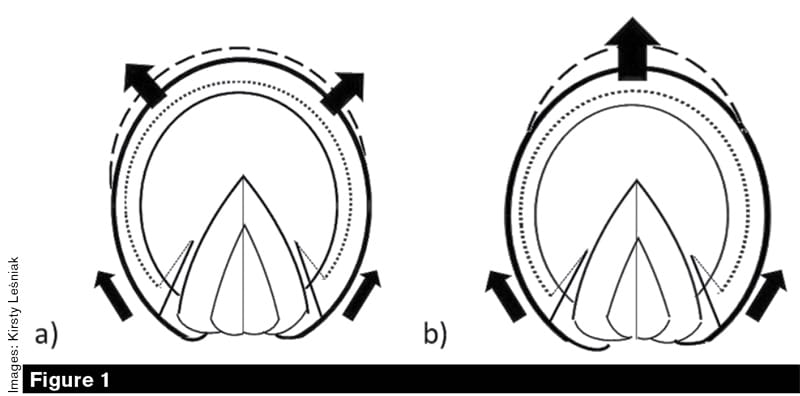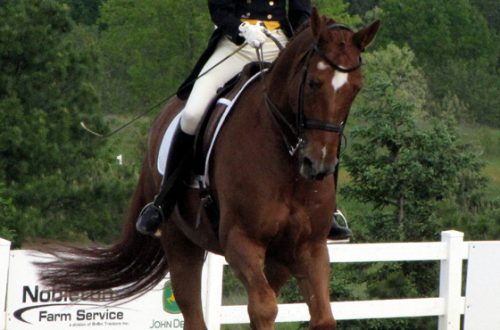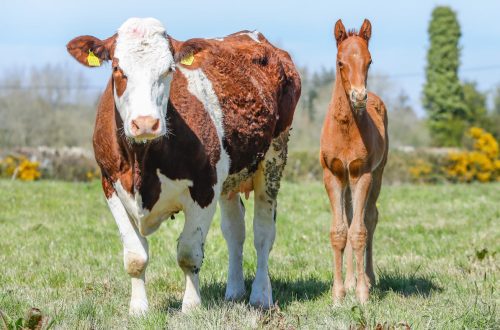
Capsules: the main types and principles of influence on the horse
Capsules: types and principles of influence on the horse
The capsule is an addition to the bridle and is used to prevent the horse from opening its mouth wide to resist the action of the iron as a result of pinching the neck muscles.
As with all things horse and riding, the choice of noseband should take into account the characteristics of your horse and the requirements that you place on it. There is no single recipe “for everyone”, as usual.
The best noseband, then, is the noseband that your horse works best with.
There are many varieties of capsules and, considering them, we will move from the simplest to the more complex.
When choosing a capsule, you need to know exactly how it works and whether you need the appropriate effect.
Depending on the type and degree of tightness of the capsule:
- gently help to keep the horse’s mouth closed and calm, which is important for contact and control;
- stop the horse’s attempts to get away from the influence of the snaffle, for example, by throwing the tongue;
- serve as a mount for some types of martingales;
- help to better fix the headband;
- balance the look of your horse’s head.
The most common is simple (regular, English, Russian) primer without an additional strap or with it (figure eight).
The simple noseband should wrap around your horse’s nose at a point about two finger widths below the cheekbone. Adjust it like this and moderately tighten. This noseband is best suited for well-trained horses that accept the snaffle calmly (they don’t shake their heads, lift their heads up, don’t tuck into the reins, or flip their tongues). These actions are doable with an open mouth and are often, though not always, indicators that your horse is trying to avoid the pressure of the snaffle on his mouth.
Depending on the anatomy of the horse and how tightly it is tightened, a simple noseband will of course be able to prevent the horse from opening its mouth.
There are varying opinions on how well a properly tightened noseband will help keep a horse’s mouth shut. It seems that the “eight” or the Hanoverian primer will do better with this task.
The photo shows a variation of a simple braided capsule. Waxed, twisted rope is very stiff, so the capsule, despite the simplicity of design, acts on the horse quite severely.
Self-tightening capsule (Swedish, self-adjusting)
This is a conventional primer using a mechanism that allows you to tighten the nose strap much more tightly. To its wide nose with rings is attached in the form of a block the lower belt with a lining. This design makes it possible not only to easily tighten, but also to tighten the primer, therefore, in the lower part of the strap, on the chin, a soft pad is provided (the nose strap can have a pad along its entire length). The Swedish noseband offers a more precise “fit” to the horse and allows for a more even distribution of pressure compared to a simple one.
This noseband is often used in dressage, especially at higher levels where the horse is being worked on a bridle that does not require a figure-of-eight. It is also used in show jumping and eventing, where it is considered a regular noseband.
The self-tightening capsule, when used correctly, is quite effective. You can pull it tighter than usual, which will help prevent the horse from trying to move away from contact with the snaffle. Like a regular capsule, a self-tightening one should be located two fingers below the cheekbone.
Unfortunately, this capsule can easily harm horses. It is very easy for a rider to tighten it to the limit, and many, unfortunately, think that the tighter they tighten the primer, the better.
A noseband that is too tight will block the horse’s jaws, cause tightness and tension in the muscles of the head, and the horse will experience pain. And to maintain proper contact with the snaffle, a relaxed jaw is needed …
Capsule with “snot” (Irish primer, Aachen)
It is a modification of a simple or self-tightening primer. “Snot” – a thin strap that is attached to the nose strap of the primer and wraps around the horse’s jaw in front of the snaffle. This design is very effective and does not allow the horse to open his mouth wide, avoid contact with the snaffle.
Straps – “snot” are attached to the nasal strap due to fixed or removable loops.
For the capsule to work correctly, it must be correctly adjusted on the horse’s muzzle. The nose strap should be two fingers below the cheekbone. Then the “snot” will take the correct position. Fix it in the chin groove and check if it pulls down on the nose strap. The center point of any capsule should rest on the nasal bone and not on the soft cartilage at the nostrils. If you fix the “snot” too low, it will interfere with the flow of air through the nostrils. This is critical to the well being of the horse.
Some riders believe that they will help the horse by loosening the nosepiece too much, but this is a misconception: in this case, the “snot” will pull the connection point with the nose strap down to the nostrils, which is not comfortable for the horse.
An interesting type of primer with “snot” is a double primer: the “snot” here is one with the primer itself.
Hanoverian (Czech, Icelandic, Drop) capsule
It was invented by a German trainer who worked at the Spanish Riding School. This capsule goes around the nose of the horse lower than the previous types: it passes along the chin groove, but is still on the nasal bone.
The Hanover noseband is tightened in front of the snaffle and helps keep the horse’s mouth shut. It is quite popular when training young horses who are just learning to take iron. In principle, it can be considered an alternative to the “snot” noseband, however, many riders and trainers find that the Hanoverian noseband detracts from the appearance of the horse’s head. Its location on the muzzle also makes it unsuitable for attaching some types of martingales.
Czech capsule with metal clip. Such a primer should stretch less due to metal parts. They also prevent pinching the horse’s skin. However, if the fit is not correct, it is easy to harm the horse.
Mexican (cross, Grackle, curly, “eight”) capsule.
The straps of this capsule are buckled at the end of the upper jaw, above the cheekbone, and then cross the nose diagonally and fasten with a second buckle at the chin groove. They keep the horse’s mouth closed and prevent attempts to avoid contact with the snaffle. The crossing is located relatively high on the nose of the horse. This prevents squeezing of the nostrils and allows air to enter. At the intersection there is a leather disk with a fleece and neoprene backing, which protects the nose from crushing and at the same time serves to additionally fix the capsule on the horse’s muzzle. Some modifications have a shorter neck strap and small rings in the design.
The photo shows a Mexican capsule, consisting of rubber bands. It cannot be tightly tightened, but it, stretching and contracting, somehow or methodically returns the horse’s mouth to a closed state. This noseband option is well suited to “gentle”, sensitive horses that are not prone to hard resistance.
The Mexican noseband is especially popular with show jumpers and triathletes. Many riders find it more comfortable for the horse than a regular noseband, as this placement of the harness allows the horse to open his nostrils wider and does not cause the horse’s teeth to pinch the inside of the cheeks.
Choosing the right capsule
The choice of noseband will depend on your horse. Some animals need more pressure, while others, on the contrary, do not tolerate it well. The strength level of his fit may be related to your current workout plans. Small changes invigorate horses a bit and make them focus.
The tighter primer actually allows the use of softer hardware, which can be regarded as a positive factor. It is always easier and more comfortable to work with properly selected and fitted horse ammunition. She responds better to your controls, doesn’t get pinched, nervous or fussy.
The trend to make the ride as pleasant as possible for the horse has led to the development of single occiput bridles, in which the occiput of the nosepiece is integrated into the overall sling.
In a conventional bridle, the occiput of the nosepiece passes through slots in the occiput of the bridle. When buying a new nosepiece, pay attention to whether it will fit the bridle.
The capsules, among other things, are an element that can successfully decorate the headband. They can have various design solutions, emphasize the advantages and hide the flaws in the shape of the horse’s head.
Valeria Smirnova, Maria Mitrofanova (according to materials on the site http://practicalhorsemanmag.com)
Photos courtesy of the horse shop Prokoni Shop





